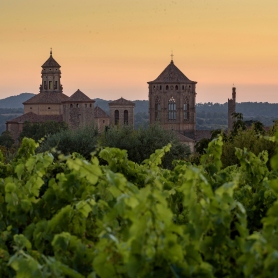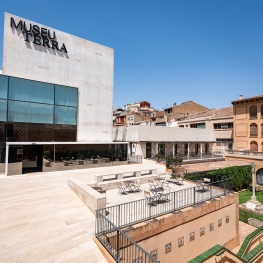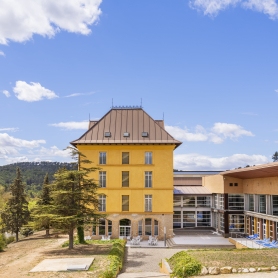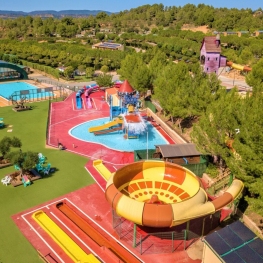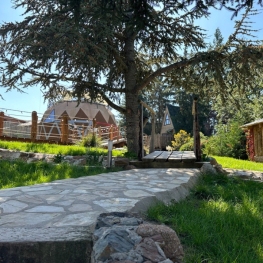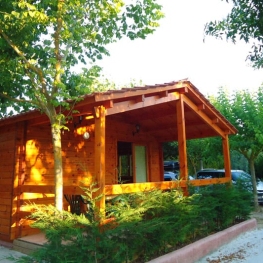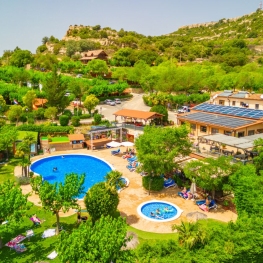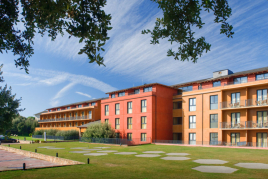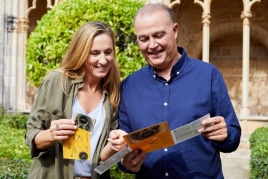Arrelats: unique and monumental trees
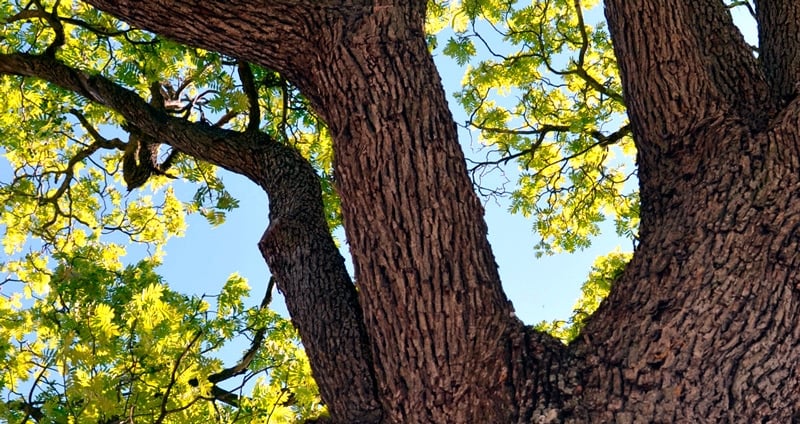
 We present an environmental, historical and literary initiative that is set around a fortnight of emblematic trees in the municipality of Vimbodí and Poblet which is included under the name of Arrelats.
We present an environmental, historical and literary initiative that is set around a fortnight of emblematic trees in the municipality of Vimbodí and Poblet which is included under the name of Arrelats.
This is exemplary of great beauty and charm, each of which has a singularity associated with its shape or size, its age or historical facts which has witnessed. This project seeks to spread among the population natural, historical and heritage of all these wooden behemoths values through activities related to leisure, knowledge and respect for nature.
Trees know the secret
They say that when the trees populated the earth had a formidable march and moved to and fro, always at night, with the only precaution not to trip over their own roots and whimsical branches. They could also talk under the moon, but in a special language and not accessible to other species. They say everything was ruined with the issue of the apple and the apple God imputed, and with it all the trees, in the case of temptation Eve.
 God punished the trees to stand still for ever and ever and to exercise speech only when the rain and wind were so intense that the words of the trees were confused with rumor. Adam asked a penalty relief, guilt, he said, has been all-Eva and here began only to have God authorized the trees to move in a restricted perimeter. So the trees since then sink and extend the roots here and there as if they were living, growing towards the creator and widen branches and drink right and left, remembering those old and wonderful times when everything was as simple as taking the profuna roots of land and start walking. To lift the punishment on speech, God wanted to know nothing.
God punished the trees to stand still for ever and ever and to exercise speech only when the rain and wind were so intense that the words of the trees were confused with rumor. Adam asked a penalty relief, guilt, he said, has been all-Eva and here began only to have God authorized the trees to move in a restricted perimeter. So the trees since then sink and extend the roots here and there as if they were living, growing towards the creator and widen branches and drink right and left, remembering those old and wonderful times when everything was as simple as taking the profuna roots of land and start walking. To lift the punishment on speech, God wanted to know nothing.
The extraordinary saga that was improving the species, a few hundred trees are scattered throughout the world. And no one knows why, some of the trees elders who have the wisdom of everything you have seen it happen and nothing has left them indifferent, are concentrated in a small territory in the Conca de Barbera, sheltered from the Mountains of Prades and near the Monastery of Poblet.
The trees extend their term and today we will review where they are to meet and know more about them.
Pine Fontanals
 A good state of preservation, despite having a dry branch. The trunk bark overlying heavily striated protects and, although part of a single unit, within a few meters is divided into two shafts of large volume. Pine is located behind a haystack, in a high and surrounded by fields, in the place of the Fontanals, within heading the corrego copse. Your situation suggests that, surely, the tree was retained by the shadow He offered to farmers in times of rest. It is also called pine or pine corrego Trinidad.
A good state of preservation, despite having a dry branch. The trunk bark overlying heavily striated protects and, although part of a single unit, within a few meters is divided into two shafts of large volume. Pine is located behind a haystack, in a high and surrounded by fields, in the place of the Fontanals, within heading the corrego copse. Your situation suggests that, surely, the tree was retained by the shadow He offered to farmers in times of rest. It is also called pine or pine corrego Trinidad.
It is a white pine, which is the Mediterranean tree par excellence. It has needle - like leaves and grouped in twos. Much of the cones remain on the tree until decomposition, making it relatively easy to distinguish from other species of pine. White pine makes up about 20% of Catalan forests. You can live 250 to 300 years, not surprising to find isolation.
It's kind large producer of resin, a raw material in the chemical industry for the manufacture of varnishes, turpentine or sticky gums.
In case of fire, when in contact with open fire pineapples to promote seed dispersal and thus promote the regeneration of burned forest.
Encina of Plans
 A good state of preservation, with rounded, and a trunk large diameter protected by a timid striate cortex and gray. You can see some regrowth that hinder the appreciation of the trunk which is divided into a number of branches spread in a fairly homogeneous.
A good state of preservation, with rounded, and a trunk large diameter protected by a timid striate cortex and gray. You can see some regrowth that hinder the appreciation of the trunk which is divided into a number of branches spread in a fairly homogeneous.
Plans Holm makes the boundary between two farms, this may be the reason for that has been preserved over time. Tree being, is a magnificent view Riudabella Castle, the Monastery of Poblet, Prades Mountains and much of the Conca de Barbera. Nearby there is a raft large canvas, which since 1981 supplies water to the town of Vimbodí.
The oak has a wide, dense and rounded crown, with perennial, long, dark and rough on the upper leaves and with many nerves in the back. Its fruits, acorns are an important food source for wildlife. It is a typical Mediterranean species and the most characteristic tree of the Iberian Peninsula and is called holm oak forests.
The acorns have been used for livestock consumption, their wood for making farming tools and other carpentry tools, and branches for firewood and charcoal.
The popular expression "oak wood, vine wine, olive oil and wheat bread" attests to the quality of the wood of this tree as fuel.
Rowan Riudabella
 The rowan crown Riudabella a vineyard and is situated next to the T-700 road between Poblet and Prades. This example, probably the largest in Catalonia of its kind, has the trunk covered by a crust with lots of stretch marks. Branches, slender force, have dry ends in some parts. In autumn, the foliage becomes yellowish and reddish tones that make it stand out from many other trees, and is finally stripped of leaves until the following spring.
The rowan crown Riudabella a vineyard and is situated next to the T-700 road between Poblet and Prades. This example, probably the largest in Catalonia of its kind, has the trunk covered by a crust with lots of stretch marks. Branches, slender force, have dry ends in some parts. In autumn, the foliage becomes yellowish and reddish tones that make it stand out from many other trees, and is finally stripped of leaves until the following spring.
The rowan is on the farm Riudabella, which names the castle is owned by the Gil family since the late nineteenth century, following the confiscation of Mendizabal.
The rowan is the lush and rounded crown, trunk greyish and hairy orange and green young branches. Its leaves are compound, ie, are formed by a set of segments called leaflets, which can appear individually but actually leaves are part of the same whole. Flowers, white or cream, with five petals, are grouped, and the fruit, round and fleshy, taking a range of colorations depending on the state of ripening from green to rust, time and can be consumed. It is a deciduous tree, which appears on wet ground as companion species of oaks, oak and pine forests.
The rowan wood has traditionally been used in cabinet making, and given its high concentration in pectins, has also been used in the production of liqueurs and gelatins.
The seeds germinate more easily if they have been ingested by animals and then expelled with the stool.
Chestnut Castellfollit
 They form a group of seven copies, cataloged local and regional interest, each of which has unique characteristics, with trunks of large, hollow inside and surrounded by a heavily striated bark, with few live branches. Its original function was the production of fruit. Currently, however, the production is low.
They form a group of seven copies, cataloged local and regional interest, each of which has unique characteristics, with trunks of large, hollow inside and surrounded by a heavily striated bark, with few live branches. Its original function was the production of fruit. Currently, however, the production is low.
The seven chestnut trees are located near the House of the Monks, a former farm of Poblet founded in the twelfth century and rebuilt a few decades ago as a summer residence of the monks. It is believed that these specimens were planted centuries ago to supply chestnut monastery. Near the rise imposing chestnut Rock West, visible from Vimbodí and known for being the last place where the sun before putting. The ancient chestnut trees are located in the Poblet, between the playground of the Rock Bee and forest Castellfollit house, modernist style, built in the early twentieth century.
The chestnut is a big and with a great capacity for coppicing tree. Has the green-brown bark, smooth color younger striated gray feet and the old. In autumn, this tree produces a infrutescencia as closed and thorny of leaving the dome chestnuts appreciated.
Include its ornamental value, not only for the thousand and one ways that can acquire, but also by the various shades that catches their foliage at different seasons, from deep green to yellow, red and brown. As it grows, the trunk has a tendency to empty inside, so it becomes a refuge for wildlife.
This species is used for the production of timber and Brazil nuts which is essential to celebrate the chestnut, a popular festival that took place on the eve of All Saints in Catalonia. Formerly had a symbolic part of communion with the soul of the dead, because while chestnuts were roasted, prayed the rosary in memory of deceased relatives.
Higuera de la Finca the Walls
 This fig tree is in excellent health and remains in this place for many years, perhaps for the shade that produces its dense foliage the warm months of the year, or by their fruits. The bark has few stretch marks, scars and trunk of long ago cut branches are preserved. The farm gets its name from the outer wall of Poblet which delimits the vineyard, which manages the company Torres. Near the fig tree is the Middle Farm, originally from Roman times and place where the monks settled that, in the twelfth century they reached the area to found the Monastery of Poblet.
This fig tree is in excellent health and remains in this place for many years, perhaps for the shade that produces its dense foliage the warm months of the year, or by their fruits. The bark has few stretch marks, scars and trunk of long ago cut branches are preserved. The farm gets its name from the outer wall of Poblet which delimits the vineyard, which manages the company Torres. Near the fig tree is the Middle Farm, originally from Roman times and place where the monks settled that, in the twelfth century they reached the area to found the Monastery of Poblet.
The fig tree is a deciduous tree bark smooth and gray. It has a dense, rounded and often highly branched crown. The leaves are very characteristic: claps and large, hairy and rough, dark green on top and leathery and paler on the underside. Cultivated since ancient times, the wild fig tree becomes easily in dry and sunny land with deep soil moist. The green parts of the tree contain latex substance that thickens on contact with air and can cause allergic reactions mild if in contact with skin.
Formerly, the latex of the fig tree was used to curdle milk, fight tooth decay and treat warts.
The fig tree was one of the first plants cultivated by man, even before the wheat, barley or legumes.
Hackberry Poblet
 It grows next to the grounds of the Monastery of Santa Maria de Poblet, near the T-700 road to Prades. They could have kept this place in the shadow brought when people moved by car or on foot. It has great vitality, with a trunk surrounded by a greyish bark with few grooves. The cup is very dense branches, some of which cross each other. The hackberry is located near term cross the outside of Poblet, not far from the Farm Mitjana.
It grows next to the grounds of the Monastery of Santa Maria de Poblet, near the T-700 road to Prades. They could have kept this place in the shadow brought when people moved by car or on foot. It has great vitality, with a trunk surrounded by a greyish bark with few grooves. The cup is very dense branches, some of which cross each other. The hackberry is located near term cross the outside of Poblet, not far from the Farm Mitjana.
The hackberry is a tree that can reach large. Has smooth gray bark and the cup is spherical and the leaves are finished in an elongated and curved tip, asymmetrical base. This deciduous species tends to empty the trunk inside. It produces edible round fruits, which are first green, then yellow, blue and finally black. It is then when they are fully ripe.
The wood of the hackberry, very flexible, was formerly used for the manufacture of agricultural tools. The branches are destined to feed livestock, and fruits for human consumption.
According to tradition, the shepherds made wooden flutes with hackberry and said his music frightened wolves.
Cedar Garden of the Salesians
 The towering cedar Garden of the Salesians over 30 meters high. It presents a good condition and are only dry the apical ends of some branches. cut scars being damaged by winds branches are observed, causing an imbalance in the shape of the glass. It is situated at the entrance to the grounds of the Monastery of Poblet, accompanied by other plant species, within a private garden in the grounds of the Salesians, managed by this religious congregation. Along with this cedar there was another even greater, which was uprooted by strong gale January 24, 2009.
The towering cedar Garden of the Salesians over 30 meters high. It presents a good condition and are only dry the apical ends of some branches. cut scars being damaged by winds branches are observed, causing an imbalance in the shape of the glass. It is situated at the entrance to the grounds of the Monastery of Poblet, accompanied by other plant species, within a private garden in the grounds of the Salesians, managed by this religious congregation. Along with this cedar there was another even greater, which was uprooted by strong gale January 24, 2009.
Cedar is an evergreen, greyish bark, sturdy trunk and pyramidal shape. The branches arise from the trunk horizontally, with the end tilted towards the ground. To differentiate this from a pine tree, we must look at the sheets are grouped in pairs pine, and cedar do one at a time or in small groups. Pineapples in this species are smooth and rounded and contain seeds with a membranous wing favors, at maturity, are dispersed by wind.
Cedar wood is used to make essential oils and also to make incense. Given its properties, the essential oil of cedar can be applied in animals and insect repellent.
Cypresses Torrents
 The set of cypress trees surrounding the shrine, there are two located on the front right side. The largest is the gray and blackened crust, and has lost in some sections. This tree is over 20 meters high, with the elongated glass feature. The hermitage of the Virgin of the Torrents, co - patron of Vimbodí, has its origins in the fifteenth century, following the discovery in this place of an image of the Virgin. The present church dates from 1714. It is estimated that the four largest enclosure cypresses were planted in that same period.
The set of cypress trees surrounding the shrine, there are two located on the front right side. The largest is the gray and blackened crust, and has lost in some sections. This tree is over 20 meters high, with the elongated glass feature. The hermitage of the Virgin of the Torrents, co - patron of Vimbodí, has its origins in the fifteenth century, following the discovery in this place of an image of the Virgin. The present church dates from 1714. It is estimated that the four largest enclosure cypresses were planted in that same period.
Cypress tree and aromatic wood hard, has a straight trunk surrounded by a hard crust of a brown or gray, cracked in adult specimens. It is small and thin leaves, dark green color, densely covering the branches permanently. He lives in warm and sunny environments, in areas of irregular rainfall. It is very long - lived and in some cases can exceed 1,000 years.
The cypress wood is very durable and very resistant to the action of fungi and insects. For this reason, traditionally it has been used to build ships, beams, doors, coffins and pallets.
The cypress is a symbol of hospitality. In the past, two copies of cypress beside a house travelers indicated that there was offered food and bed.
Cottonwood Torrents
 This poplar, or xop, as popularly called these, stands out for its height, more than 35 meters. It grows to touch the stream bed and, despite having a dry branch, a good state of preservation. It has an elongated profile, with a trunk devoid of branches in the first meters and covered with a crust strongly striated. In the upper trunk scattered branches that lead to a thin glass but with a rather large width they appear. Located in the area nearest to the torrent tables and on the road, this tree is the highest of all those who form the group of trees cataloged Vimbodí and Poblet, and also one of the largest cup.
This poplar, or xop, as popularly called these, stands out for its height, more than 35 meters. It grows to touch the stream bed and, despite having a dry branch, a good state of preservation. It has an elongated profile, with a trunk devoid of branches in the first meters and covered with a crust strongly striated. In the upper trunk scattered branches that lead to a thin glass but with a rather large width they appear. Located in the area nearest to the torrent tables and on the road, this tree is the highest of all those who form the group of trees cataloged Vimbodí and Poblet, and also one of the largest cup.
The poplar has a narrow, straight and gray trunk, equipped with a black ribs that appear as the tree becomes an adult. The top is generally open, sparse and stretched, and is characterized by the presence of green leaves on both sides. In late spring seeds, surrounded by an abundant erases cottony, result in a white carpet deposited on the ground. It is a deciduous tree, with different male and female feet. Because of its water needs, usually found near rivers, streams and places with presence of water. The poplar tree is fast growing and low longevity because it rarely exceeds one hundred years.
Its wood is very soft whitish yellow, elastic, and very dense, so it is used for the manufacture of packing cases, matches, toothpicks and paper pulp.
For many years, the bark of young poplar trees has been used to combat mild headache, as a natural aspirin.
Arrelats

The Arrelats project is promoted by the City of Vimbodí i Poblet and invites you to enjoy this heritage through information elements and vertical signaling in the same place where the tree is located. Moreover, the information of each tree is complemented by an evocative literary story writer Teresa Duch expressly designed to Arrelats.
The project aims to increase awareness of the unique trees and at the same time aware of the necessary preservation of the forest whole territory. Therefore, the trees have been inventoried with the main features of each. Trees were declared of local interest, of local interest and there are two that were declared as monumental trees in Catalonia. They are also marked for easy identification and is all about the trees, the positioning coordinates, the history that surrounds them, the routes can be done, etc.
You can find more information on www.arrelats.ctfc.cat.
What to do
Museu Terra
L'Espluga de Francolí (a 4.6 Km)A visit to the Museum of Rural Life of the Carulla Foundation,…
Reial Monestir de Santa Maria de Poblet
Vimbodí i Poblet (a 3.5 Km)A magnificent architectural complex located among the most prominent monasteries in Europe.…
Espai Maldanell
Vallbona de les Monges (a 14.1 Km)Located in what was the first mill of the Vallbona farmers' cooperative…
Where to eat
Iberik Rocallaura Balneari
Vallbona de les Monges (a 13.8 Km)Iberik Rocallaura Balneari is located on the Cistercian Route, in the municipality…
Where to sleep
Camping Montblanc Park Capfun
Tarragona (a 11.5 Km)In the interior of the Costa Daurada, the Montblanc Park campsite offers…
Hotel rural - Xalet de Prades
Prades (a 11.6 Km)Immerse yourself in the nature of the Sierra de Montsant Natural Park…
Càmping Prades Park
Prades (a 11.7 Km)Camping Prades Park offers an ideal setting for what most appeals to…
Càmping Capfun Serra de Prades
Vilanova de Prades (a 9.7 Km)In the heart of nature, the Prades campsite is located in Vilanova…


